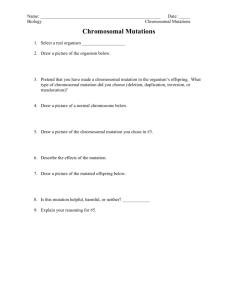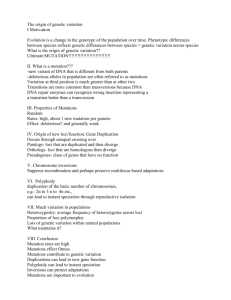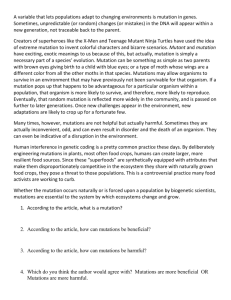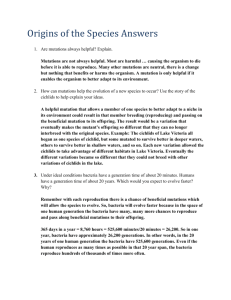Unit 3 - Section 7.1 Adaptation and Variation
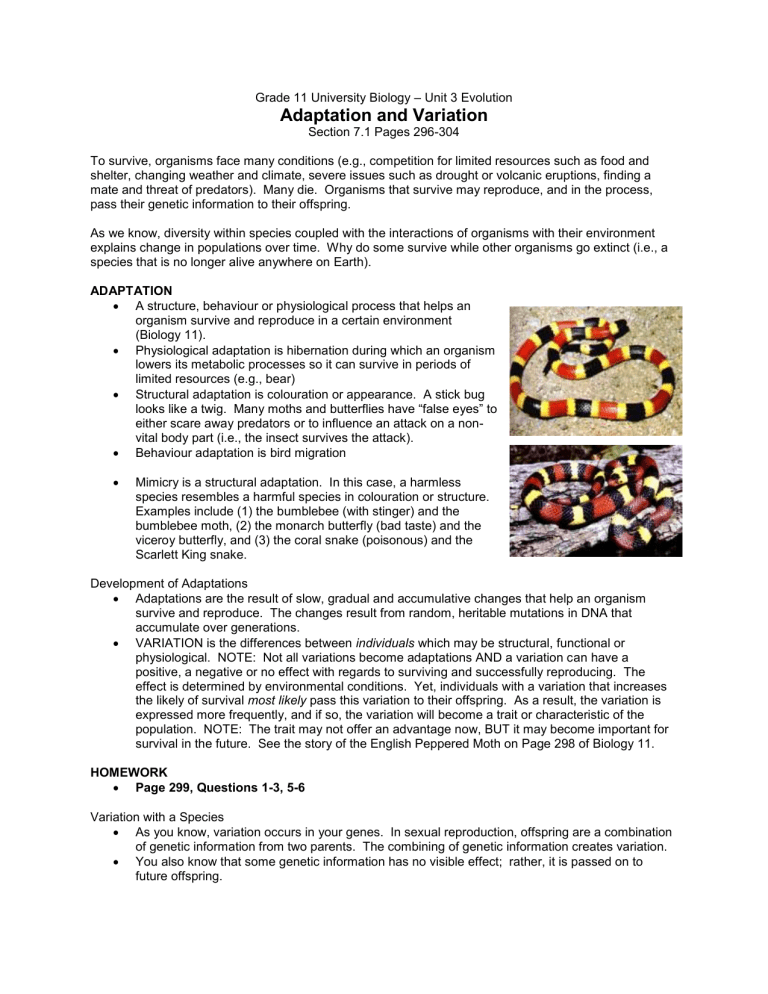
Grade 11 University Biology – Unit 3 Evolution
Adaptation and Variation
Section 7.1 Pages 296-304
To survive, organisms face many conditions (e.g., competition for limited resources such as food and shelter, changing weather and climate, severe issues such as drought or volcanic eruptions, finding a mate and threat of predators). Many die. Organisms that survive may reproduce, and in the process, pass their genetic information to their offspring.
As we know, diversity within species coupled with the interactions of organisms with their environment explains change in populations over time. Why do some survive while other organisms go extinct (i.e., a species that is no longer alive anywhere on Earth).
ADAPTATION
A structure, behaviour or physiological process that helps an organism survive and reproduce in a certain environment
(Biology 11).
Physiological adaptation is hibernation during which an organism lowers its metabolic processes so it can survive in periods of limited resources (e.g., bear)
Structural adaptation is colouration or appearance. A stick bug looks like a twig. Many moths and butterflies have “false eyes” to either scare away predators or to influence an attack on a nonvital body part (i.e., the insect survives the attack).
Behaviour adaptation is bird migration
Mimicry is a structural adaptation. In this case, a harmless species resembles a harmful species in colouration or structure.
Examples include (1) the bumblebee (with stinger) and the bumblebee moth, (2) the monarch butterfly (bad taste) and the viceroy butterfly, and (3) the coral snake (poisonous) and the
Scarlett King snake.
Development of Adaptations
Adaptations are the result of slow, gradual and accumulative changes that help an organism survive and reproduce. The changes result from random, heritable mutations in DNA that accumulate over generations.
VARIATION is the differences between individuals which may be structural, functional or physiological. NOTE: Not all variations become adaptations AND a variation can have a positive, a negative or no effect with regards to surviving and successfully reproducing. The effect is determined by environmental conditions. Yet, individuals with a variation that increases the likely of survival most likely pass this variation to their offspring. As a result, the variation is expressed more frequently, and if so, the variation will become a trait or characteristic of the population. NOTE: The trait may not offer an advantage now, BUT it may become important for survival in the future. See the story of the English Peppered Moth on Page 298 of Biology 11.
HOMEWORK
Page 299, Questions 1-3, 5-6
Variation with a Species
As you know, variation occurs in your genes. In sexual reproduction, offspring are a combination of genetic information from two parents. The combining of genetic information creates variation.
You also know that some genetic information has no visible effect; rather, it is passed on to future offspring.
Genetic variation in a population is the result of the variation in genetic information of all individuals in the population.
Mutations
Mutations are the starting point of variation in populations.
A permanent change in the genetic material of an organism; the only source of genetic variation
(Biology 11).
Mutations produce new alleles.
Mutations occur continuously
Mutations can occur spontaneously as DNA is copied (S-phase of Interphase)
Environmental mutations can be caused by exposure to radiation, “gender benders” or other dangerous environmental agents.
With a mutation, a cell may express the new characteristics, die, no change, malfunction or multiply rapidly (i.e., tumour).
Mutations can significantly alter the shape or structure of DNA either negatively or positively.
Many mutations are beneficial.
If a mutation occurs in a somatic cell , the mutation disappears with the death of the organism. If the mutation occurs in the gamete , the mutation may be passed to succeeding generations as a new allele. IN YOUR OWN WORDS, rewrite this sentence so it makes sense to you.
Mutations and Selective Advantage
Selective Advantage is a genetic advantage that improves an organism’s chance of survival, usually in a changing environment.
Over time, a selective advantage allows an organism with these advantages to be favoured in terms of survival and reproduction (see example of Daphnia on page 301 of Biology 11)
Rapid Reproduction and Selective Advantage
Some organisms reproduce (e.g., bacteria, insects) or replicate (e.g., virus) very, very quickly.
For example, some populations of bacteria can double in less than 10 minutes.
In these cases, a new allele from a random mutation…previously insignificant…may provide a selective advantage to some individuals if environmental conditions change. If the trait is passed to future generations, it may become prevalent in the population.
Antibiotic-Resistant Bacteria
An example of rapid reproduction and selective advantage is the bacterium Staphylococcus aureus . It is relatively common, and it can have minor or major impacts on human health.
Individuals reproduce asexually. Under optimum conditions, an individual reproduces every 30 minutes. If a mutation occurs during environmental change, the individuals with the mutation may survive and pass the mutation to their offspring. If the change is an antibiotic and the mutation is resistance to the antibiotic, the antibiotic may quickly become useless.
In this case, it is important to recognize that populations change, not individuals .
HOMEWORK
Page 304, Questions 1-4, 6, 12-14






